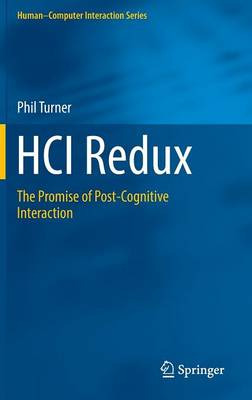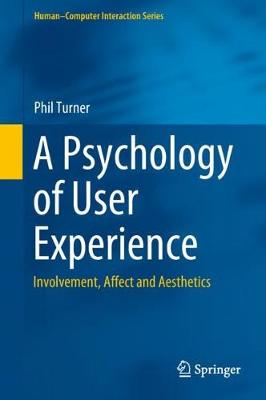Human-Computer Interaction
3 total works
This book explores the role of cognition in the field of human-computer interaction (HCI) assessing how the field has developed over the past thirty years and discusses where the field is heading, as we begin to live in increasingly interconnected digital environments.
Taking a broad chronological view, the author discusses cognition in relation to areas like make-believe, and appropriation, and places these more recent concepts in the context of traditional thinking about the psychology of HCI.
HCI Redux will appeal to undergraduate and postgraduate students and researchers in psychology, the cognitive sciences and HCI. It will also be of interest to all readers with a curiosity about our everyday use of technology.
It is well-established that while cognitive psychology provides a sound foundation for an understanding of our interactions with digital technology, this is no longer sufficient to make sense of how we use and experience the personal, relational and ubiquitous technologies that pervade everyday life. This book begins with a consideration of the nature of experience itself, and the user experience (UX) of digital technology in particular, offering a new, broader definition of the term. This is elaborated though a wide-ranging and rigorous review of what are argued to be the three core UX elements. These are involvement, including shared sense making, familiarity, appropriation and “being-with” technologies; affect, including emotions with and about technology, impressions, feelings and mood; and aesthetics, including embodied aesthetics and neuroaesthetics. Alongside this, new insights are introduced into how and why much of our current use of digital technology is simply idling, or killing time.
A particular feature of the book is a thorough treatment of parallel, and sometimes competing, accounts from differing academic traditions. Overall, the discussion considers both foundational and more recent theoretical and applied perspectives from social psychology, evolutionary psychology, folk psychology, neuroaesthetics, neuropsychology, the philosophy of technology, design and the fine arts. This broad scope will be enlightening and stimulating for anyone concerned in understanding UX.
A Psychology of User Experience stands as a companion text to the author’s HCI Redux text which discusses the contemporary treatment of cognition in human-computer interaction.
Imagination is highly valued and sought-after, yet elusive and ill-defined. Definitions range from narrowly cognitive accounts to those which endow imagination with world-making powers. Imagination underpins our ability to speculate about the future and to re-experience the past. The everyday functioning of society relies on being able to imagine the perspectives of others; and our sense of who we are depends on the stories our imaginations create. Our soaring imaginations have taken us to the moon and allowed Einstein to race a light beam. Unsurprisingly, imagination underlies every aspect of human-computer interaction, from the earliest conceptual sketches, through the realistic possibilities portrayed variously in well-known tools as scenarios and storyboards, through to the wilder shores of design fictions. Yet, curiously, imagination is very rarely addressed directly in the design and HCI literature (and is wholly missing from virtual reality).
This book addresses this gap in our accounts of how we imagine, conceptualise, design and use digital technologies. Drawing on many years of practical and academic experience in human computer-interaction, together with a wide range of material from psychology, design, cognitive science and HCI, seasoned with a little philosophy and anthropology, Imagination + Technology first considers imagination itself and the principal farthings of a new account. Later chapters discuss the role of imagination in the design, aesthetics, use and experience of digital technologies before the concluding chapter focusses on the provocative nature of imagination. The book will be stimulating reading for anyone working in the field of interactive technology and related areas, whether academics, students or practitioners.


